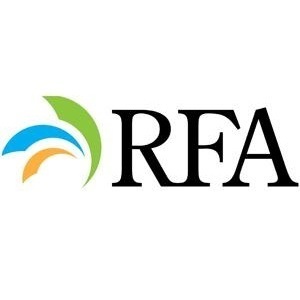RFA to CARB: Ethanol plays a key role in LCFS success story

April 27, 2018
BY Renewable Fuels Association
Ethanol has played a key role in the success of California’s Low Carbon Fuel Standard and is poised to make even greater contributions to the state’s climate policy objectives if certain regulatory actions are taken to allow greater market access, the Renewable Fuels Association said in comments submitted this week to the California Air Resources Board.
The LCFS requires fuel suppliers to annually reduce the carbon intensity (CI) of fuels consumed in the state through 2020. CARB is holding a hearing today to consider amendments that would expand the LCFS through 2030 and increase the stringency of the required CI reductions. RFA Executive Vice President Geoff Cooper will provide oral testimony at the hearing.
“As CARB now considers expanding the LCFS through 2030 and ramping up the required fuel carbon intensity reduction to 20 percent below 2010 levels, we want to express our support for actions that can help facilitate achievement of future LCFS goals by accelerating and maximizing the decarbonization of remaining liquid transportation fuels,” RFA wrote in comments.
CARB data show that ethanol is responsible for reducing GHG emissions by 14.5 million metric tons (CO2-equivalent), or 45 percent of the total reductions achieved under the LCFS to date, RFA noted in its comments. In addition, data released by CARB yesterday shows that the ethanol used in California has an average CI that is 31 percent lower than gasoline.
Advertisement
Advertisement
RFA’s comments offered several recommendations that would allow ethanol to make even greater contributions to the LCFS goals, including:
- Expediting approval of new pathway petitions for cellulosic ethanol produced from grain kernel fiber.
- Amending current regulations to allow for the sale of E15 (15 percent ethanol, 85 percent gasoline) in California. A recent study by Life Cycle Associates shows that introduction of E15 would significantly increase LCFS credit generation, reduce gasoline consumption, and enhance the near- and long-term sustainability of the program. If California allows the sale of E15 beginning in 2020, the study shows cumulative GHG reductions achieved under the LCFS increase by 15-19 MMT CO2e by 2030, depending on the mix of ethanol sources.
Advertisement
Advertisement
- Revising default lifecycle GHG assessment model assumptions regarding grain sorghum production.
- Beginning a process to consider other options for further decarbonizing the remaining liquid fuels in the California market.
To view a copy of RFA’s full comments to CARB, click here.
Related Stories
The U.S. Energy Information Administration maintained its forecast for 2025 and 2026 biodiesel, renewable diesel and sustainable aviation fuel (SAF) production in its latest Short-Term Energy Outlook, released July 8.
XCF Global Inc. on July 10 shared its strategic plan to invest close to $1 billion in developing a network of SAF production facilities, expanding its U.S. footprint, and advancing its international growth strategy.
U.S. fuel ethanol capacity fell slightly in April, while biodiesel and renewable diesel capacity held steady, according to data released by the U.S. EIA on June 30. Feedstock consumption was down when compared to the previous month.
XCF Global Inc. on July 8 provided a production update on its flagship New Rise Reno facility, underscoring that the plant has successfully produced SAF, renewable diesel, and renewable naphtha during its initial ramp-up.
The U.S. EPA on July 8 hosted virtual public hearing to gather input on the agency’s recently released proposed rule to set 2026 and 2027 RFS RVOs. Members of the biofuel industry were among those to offer testimony during the event.
Upcoming Events










